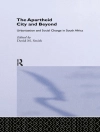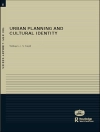Historical geography is an active, theoretically-informed and vibrant field of scholarly work within modern geography, with strong and constantly evolving connections with disciplines across the humanities and social sciences. Across two volumes, The SAGE Handbook of Historical Geography provides you with an an international and cross-disciplinary overview of the field, presenting chapters that examine the history, present condition and future potential of the discipline in relation to recent developments and research.
Table of Content
VOLUME 1
Editors′ Introduction – Mona Domosh, Michael Heffernan & Charles W. J. Withers
Part I: Histories and Geographies
Introduction to Part I – Michael Heffernan
Chapter 1: Pre-histories – Robert Mayhew
Chapter 2: Between History and Geography – Michael Heffernan and Karin M. Morin
Chapter 3: The Modern Discipline – Heike Jöns
Chapter 4: East Central Europe – Steve Jobbitt and Robert Gyori
Chapter 5: Russia and Eurasia – Jonathan D. Oldfield
Part II: Land and Landscapes
Introduction to Part II – Mona Domosh
Chapter 6: Landscape and History – Veronica Della Dora
Chapter 7: Landscape and Labour – Don Mitchell and Carlo Sica
Chapter 8: Colonial and Postcolonial Landscapes – Naomi Roux and Susan Parnell
Chapter 9: Race, Land & Freedom – Brian Williams, Levi van Sant, Alex A. Moulton & Janae Davis
Chapter 10: Global Cityscapes – Garth Myers
Chapter 11: Land, Landscape and Home – Briony Mc Donagh
Part III: Property and Money
Introduction to Part III – Mona Domosh
Chapter 12: The Place of Money in History – Chris Muellerleile
Chapter 13: Building Capital – Jane M. Jacobs
Chapter 14: Geographies of Dispossession – Vanessa Sloan Morgan, May Farrales and Sarah de Leeuw
Chapter 15: Slavery and Empires – Joshua F.J. Inwood, Derek H. Alderman and Stephen P. Hanna
Chapter 16: Industrialisation and Resistance – Andrew Davies
Part IV: Population and Mobility
Introduction to Part IV – Charles W. J. Withers
Chapter 17: Enumerating the Populace – Matthew G. Hannah
Chapter 18: Population, Mobility and Moral Regulation – Stephen Legg
Chapter 19: Vagrancy, Mobility and Colonialism – Catherine Coleborne and Maree O’Connor
Chapter 20: Troubling, Troubled, Troublesome – Cheryl Mc Geachan
Chapter 21: Famine and Hunger: Enclosures, Entitlements and the Production of Starvation – David Nally
Chapter 22: Disease: Dangerous Vectors – Paul Jackson
VOLUME 2
Part V: Territory and Geopolitics
Introduction to Part V – Michael Heffernan
Chapter 23: Geography at War – Ian Klinke
Chapter 24: State and Territory – Elliott Child and Trevor Barnes
Chapter 25: Geography and the Holocaust – Anne Kelly Knowles
Chapter 26: Cold War Planet – Matt Farish
Chapter 27: Borders – Cordelia Freeman
Part VI: Environment and Nature
Introduction to Part VI – Michael Heffernan
Chapter 28: Nature, Environment and the North – Richard Powell
Chapter 29: Climate and Climate Change – Martin Mahony
Chapter 30: Weather Watching – Georgina Endfield
Chapter 31: Urban Nature – Matthew Gandy
Chapter 32: Conservation – Mike Roche
Part VII: Science and Technology
Introduction to Part VII – Charles W. J. Withers
Chapter 33: Outer Space – Oliver Dunnett
Chapter 34: Technology as a Geographical Keyword – Scott Kirsch
Chapter 35: Engineering – K. Maria D. Lane
Chapter 36: Military Technology – Isla Forsyth
Chapter 37: Colonial Water: Hydro-resilience, Engineering and Empire – Ruth Morgan
Chapter 38: Mapping and the Physical Sciences – Simon Naylor and Matthew Goodman
Part VIII: Meaning and Communication
Introduction to Part VIII – Charles W. J. Withers
Chapter 39: Speech – Miles Ogborn
Chapter 40: Worlds into Words – and Back Again – Innes M. Keighren and Benjamin Newman
Chapter 41: Historical Geographies of Newspaper Print Media – Andres Reyes Novaes
Chapter 42: Maps, Publishing, and Civil Authority in the Age of Print – James Akerman
Chapter 43: Cultures of Regulation and Calibration – Lachlan Fleetwood
Chapter 44: Historical Geographies of Big Data – Jeremy Crampton
Part IX: Studies in Practice
Introduction to Part IX – Mona Domosh
Chapter 45: Memory, Materiality, Museology – Claire Warrior
Chapter 46: Photography, Travel, Archives – Joan M. Schwartz
Chapter 47: Architecture, Buildings, Stories – Hannah Neate
Chapter 48: Craft and Practice – Nicola Thomas
Chapter 49: History, Geography and the Geohumanities – Harriet Hawkins
About the author
Professor Charles W J Withers is Ogilvie Chair of Geography and Professor of Historical Geography at the University of Edinburgh. He has been a professor in Edinburgh since 1994. He is a fellow of the British Academy, of the Royal Society of Edinburgh, the Royal Scottish Geographical Society, and the Royal Historical Society. In 2008, he was awarded the Centenary Medal of the Royal Scottish Geographical Society in recognition of his ‘outstanding and sustained contribution to historical geography, the history of cartography and to the history of geographical knowledge’. In 2012, he was awarded the Founders’ Gold Medal of the Royal Geographical Society. This, one of the Society′s two Royal Gold Medals, was given in respect of his ‘world-leading encouragement and development of historical and cultural geography’. Professor Withers′ research and teaching interests centre on the historical geography of science and the Enlightenment, the historical geographies of print and exploration, and the history of cartography. He is the author or co-author of ten research monographs, and a further nine co-edited volumes, in addition to numerous scholarly articles and essays. His co-authored Scotland: Mapping the Nation (written with Chris Fleet and Margaret Wilkes), which was published in 2011 by Birlinn Press in association with the National Library of Scotland, was the Scottish Research Book of the Year in the Saltire Society Literary Awards for 2012. His most recent book, co-authored with Innes Keighren and Bill Bell, is Travels into Print: Exploration, Writing, and Publishing with John Murray, 1773-1859′. This was published by the University of Chicago Press in May 2015. In 2015, he was appointed by Her Majesty Queen Elizabeth II and First Minister Nicola Sturgeon to the position of Geographer Royal for Scotland, the first person to hold this title as a personal honorific for 118 years. He is currently writing a historical geography of the Prime Meridian, a narrative for which we know the solution (‘Greenwich, from 1884’) but not the problem.












